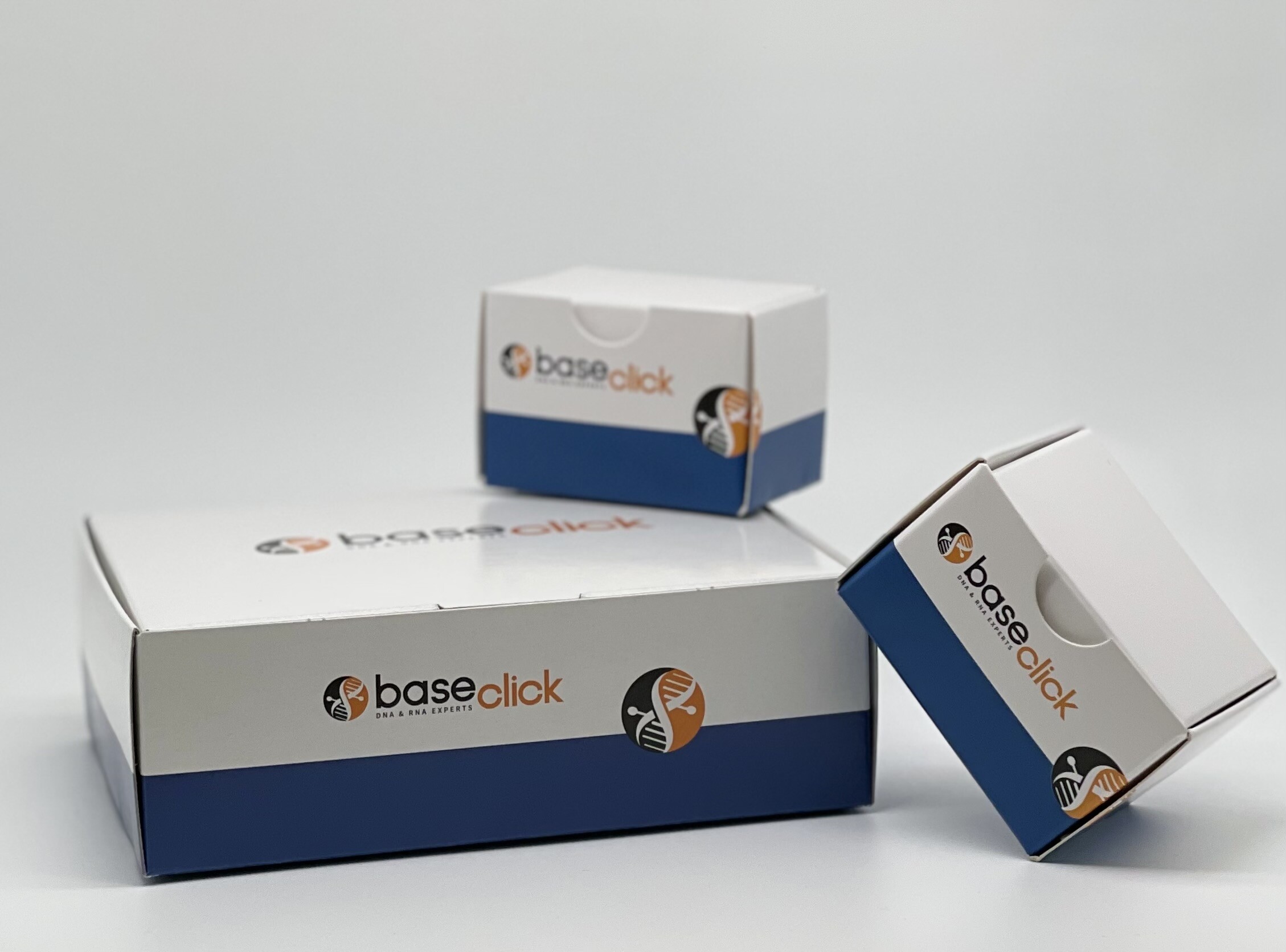- filter
Fluorescence in situ hybridization (FISH) is a molecular cytogenetic technique that enables the detection and localization of specific DNA or RNA sequences within cells/tissues. The principle of DNA FISH is to hybridize small single stranded DNA or RNA molecules (probes) to complementary sequences on chromosome spreads or in nuclei of whole cells (target), which are immobilized on glass slides. The probes are labeled directly or indirectly using fluorescent. After labeling, FISH probes and targets are thermally denatured and hybridized.
The standard FISH technique, often suffers from limitations, namely poor signal to background noise ratio due to unspecific binding of probes to only partially complementary sequences or other cellular and tissue structures. In addition, while even routine in situ detection highly benefits from densely labelled, sensitive probes, the labelling rate of FISH probes generated by traditional methods is typically low.
baseclick’s ClickTech DNA FISH Kit overcomes these limitations and provides all reagents required for the generation of highly labelled FISH probes via an easy-to-handle method based on click chemistry.


